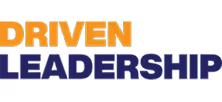Corporate Leadership Development in Seattle, WA


Leadership Training Corporate Leadership Development in Seattle, WA
An effective corporate leadership development program in Seattle, WA positions your organization to compete for talent, scale strategy, and improve business results. Seattle’s mix of technology firms, healthcare systems, higher education, and fast-growing startups creates a unique leadership challenge: leaders must manage hybrid teams, rapid change, and intense talent competition while preserving culture. This page outlines a practical, measurable approach to leadership training that moves leaders from learning to consistent, measurable impact.
Common leadership development issues in Seattle organizations
- High turnover among mid-level managers due to competitive tech market and frequent lateral moves.
- Distributed and hybrid teams with inconsistent managerial practices and engagement.
- Rapid scaling that leaves a thin leadership pipeline and unclear promotion readiness.
- Need for leaders who can translate technical expertise into coaching, influence, and strategic decision-making.
- Cultural and inclusion challenges across diverse workforces and cross-sector teams.
How we assess need: the Discovery phase
A focused needs assessment creates the foundation for a targeted program rather than generic training. Typical Discovery activities (4 weeks) include:
- Stakeholder interviews with executives, HR, and front-line supervisors.
- Role-based competency mapping against strategy and business objectives.
- 360 feedback and behavioral assessments for target cohorts.
- Organizational metrics review (turnover, engagement, performance, promotion rates).
- Identification of strategic initiatives that leadership development must enable.
The aim is to define precise outcomes (for example: reduce first-year manager turnover by X%, increase cross-functional project success rate) so the curriculum aligns to measurable business priorities in Seattle-area contexts.
Custom curricula and core modules
Curricula are tailored to industry, scale, and the specific gaps uncovered in Discovery. Core modules commonly included:
- Foundational leadership skills: communication, coaching, feedback cycles.
- Emotional intelligence and inclusive leadership to support diverse Seattle teams.
- Decision-making and prioritization under uncertainty for fast-moving product environments.
- Leading hybrid teams: accountability, meeting design, and remote engagement patterns.
- Change leadership and strategic alignment to support growth or restructuring.
- Talent development and succession planning to build a leadership pipeline.
Delivery options: in-person workshops (Seattle office or onsite), synchronous virtual cohorts, and blended learning via micro-modules to fit local schedules and remote work patterns.
Cohort programs and structure
Cohort-based models are highly effective for knowledge transfer and network building. Typical structure:
- Cohort size: 8–16 participants, cross-functional to encourage cross-pollination.
- Duration: 8–12 weeks for a focused cohort, 6–12 months for deeper behavioral change.
- Frequency: biweekly sessions with between-session leadership practice and action learning projects tied to live business challenges.
- Coaching: individual or group coaching sessions to reinforce application.
- Sponsorship: executive sponsor and HR alignment to ensure projects deliver organizational impact.
Action learning projects are selected from Seattle-specific priorities (product launches, integration of remote teams, process redesign) so participants practice new skills on real work.
Leadership pipeline development
A sustainable pipeline moves beyond one-off programs. Components include:
- Role-based competency frameworks and promotion pathways.
- High-potential identification processes and accelerated development tracks.
- Rotational assignments and stretch projects with mentoring and sponsorship.
- Bench reviews and readiness scoring tied to business needs.
- A multi-tier curriculum: frontline leader, mid-level manager, senior leader, and executive sponsorship training.
Pipeline programs in Seattle often emphasize technical-to-manager transitions to keep engineers and specialists engaged and promotable.
Measuring business impact
Measurement turns training into a business investment. Typical measurement approach:
- Baseline and follow-up 360 scores and competency assessments.
- Engagement and retention metrics for participants vs. control groups.
- Promotion and internal mobility rates for program alumni.
- Business KPIs linked to participant projects (time-to-market, customer satisfaction, revenue per team).
- Leadership effectiveness indicators (team goal completion rate, employee Net Promoter Score, quality metrics).
Expect to see early behavioral signals (improved feedback frequency, meeting efficiency) within 3 months, with measurable business outcomes (reduced turnover, increased project success) typically emerging in 6–12 months. Use a simple ROI framework: (costs saved from reduced turnover + productivity gains + revenue impact) / program investment to demonstrate value.
Implementation timelines and milestones
A pragmatic timeline balances speed and depth:
- Discovery and design: 4–8 weeks.
- Pilot cohort delivery: 8–12 weeks.
- Evaluation and refinement: 2–4 weeks post-pilot.
- Scale and embed across organization: 6–18 months depending on scope.
- Ongoing reinforcement (coaching, microlearning, manager check-ins): continuous.
For organizations building a full leadership pipeline, expect a multi-year cadence with annual reviews to refresh competencies as strategy and market conditions evolve.
Common pitfalls and how to avoid them
- Treating training as an event rather than a system: embed follow-up coaching and tie learning to business projects.
- Ignoring manager accountability: require managers to set development goals and track progress.
- Driving generic content: customize to the organization’s strategy and Seattle-specific operating realities.
- Lack of executive sponsorship: secure senior leaders to reinforce priorities and remove barriers.
- Failing to measure: define metrics up front and collect baseline data.
Sustaining results and institutionalizing leadership
To ensure long-term gains, integrate leadership development into talent processes:
- Make competency frameworks part of performance reviews and promotion criteria.
- Maintain regular bench reviews and capability audits tied to strategic planning cycles.
- Offer modular refreshers and peer-learning groups to keep skills current.
- Use data to iterate programs: continuously link development activities to measurable business outcomes.
Seattle’s competitive talent market and hybrid work norms make consistent leadership practices a strategic advantage. By aligning leadership training to measurable business goals, tailoring curriculum to local challenges, and embedding development into everyday work, organizations can build leaders who retain talent, execute strategy, and drive sustainable performance.

